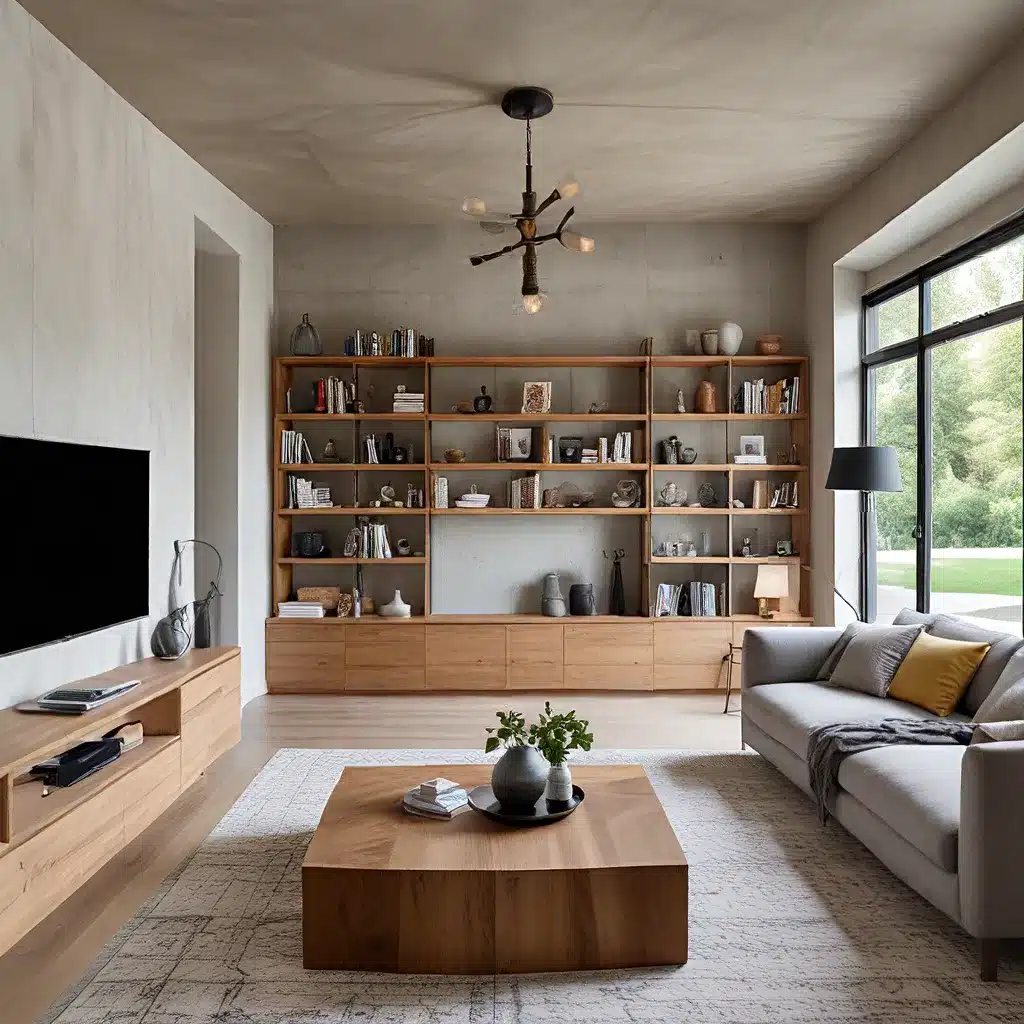
As the interior design landscape evolves, multifunctionality has emerged as a transformative design philosophy that seamlessly blends practicality with style. The demand for versatile living spaces has given rise to innovative solutions that cater to the diverse needs of modern lifestyles, creating dynamic environments that adapt to the rhythm of daily life.
The Art of Crafting Multifunctional Marvels
At the heart of multifunctional design lie core principles that guide the creation of spaces that are both functional and stylish. Integrating practical solutions is a cornerstone in this approach, shaping aesthetically pleasing and functionally versatile environments that prioritize the seamless blending of utility and style.
Maximizing Space Utilization
The art of maximizing space utilization is a crucial aspect of multifunctional design. The goal is to transform even the smallest nooks into purposeful elements, utilizing hidden storage solutions, vertical spaces, and convertible furniture to ensure every inch counts.
Convertible furniture, such as sofa beds, foldable tables, or ottomans with hidden storage, allows for quick transformations and adaptability to changing needs. Strategic spatial planning plays a vital role, with the arrangement of furniture and design elements considering ease of movement, accessibility, and the creation of distinct zones within a space.
Elevating Spaces with Stylish Aesthetics
Multifunctional design extends beyond mere functionality, elevating spaces into visually captivating environments. Embracing a cohesive design language, the integration of stylish aesthetics involves the thoughtful coordination of colors, materials, and design motifs throughout the space, creating a unified and harmonious whole.
Remaining attuned to contemporary design trends is a hallmark of stylish aesthetics in multifunctional design. Incorporating the latest trends ensures that the space remains relevant and reflects a sense of modernity, adding an extra layer of sophistication to its functionality.
Meticulous attention to detail is paramount, with every element, from the selection of furniture pieces to the arrangement of decor, contributing to the overall visual appeal of the space. Striking a delicate balance between form and function, stylish aesthetics in multifunctional design amplify the beauty of practical solutions.
Multifunctional Marvels in Different Living Spaces
The influence of multifunctional design extends across various living spaces, redefining how we approach the design of our homes.
Living Rooms: Adaptable Hubs for Modern Life
Living rooms, often the heart of a home, benefit immensely from multifunctional design solutions. Sofa beds, modular seating arrangements, and ottomans with concealed storage offer versatility and flexibility, accommodating guests, work needs, and relaxation without sacrificing style or space.
| Multifunctional Solution | Benefits |
|---|---|
| Sofa Beds | Serve as comfortable seating during the day and transform into a bed when needed, providing flexibility for accommodating guests. |
| Modular Seating Arrangements | Allow for rearrangement and detachment, enabling inhabitants to create various seating configurations to suit different scenarios. |
| Ottomans with Concealed Storage | Offer dual functionality as seating and discreet storage solutions for items like blankets, cushions, or magazines, helping maintain a clutter-free appearance. |
The integration of shelving units, adjustable-height coffee tables, and nesting tables further enhances the functionality and aesthetic appeal of living spaces, creating environments that seamlessly cater to diverse activities and preferences.
Kitchens and Dining Areas: Harnessing Multifunctionality
Kitchens and dining areas, traditionally designated for specific purposes, have undergone a transformative shift in design philosophy, embracing the principles of multifunctionality.
Modular kitchen designs with adaptable storage solutions, such as pull-out shelves, rotating corner units, and adjustable racks, maximize the utilization of every inch. Foldable or expandable surfaces on kitchen counters and dining tables provide versatility, accommodating meal preparation, dining, and other activities.
Convertible dining furniture, like tables that can be extended or transformed into different shapes, seamlessly adapt to both everyday meals and larger gatherings. Integrated seating solutions, such as benches with hidden storage or stools that tuck neatly under the table, optimize space while contributing to a clean and uncluttered aesthetic.
The integration of intelligent appliances further enhances the functionality of kitchens, with features like touchscreen refrigerators for meal planning and remote-controlled ovens streamlining tasks and elevating the cooking experience.
Multifunctional Design in Small Spaces
In the context of urban living and limited square footage, the principles of multifunctional design shine brightest. Compact furniture, vertical storage solutions, and intelligent spatial planning become essential tools for maximizing the potential of small spaces.
Multifunctional furniture items, such as foldable desks and hidden storage units, allow even the smallest spaces to be practical and stylish. As sustainability gains prominence in design, multifunctional solutions align with eco-conscious practices, incorporating sustainable materials and energy-efficient solutions.
Empowering Designers: The Role of Education
For those aspiring to master the art of multifunctional design, education plays a pivotal role. Relevant certified online interior design courses provide the foundation for understanding the principles of multifunctional design, including concepts like space planning, furniture design for multifunctionality, and balancing practical needs with aesthetics.
Embracing the Future of Multifunctional Marvels
Multifunctional marvels in interior design exemplify the evolution of spaces to meet the demands of contemporary living. By seamlessly integrating practical solutions with stylish aesthetics, designers create environments that are not only versatile but also visually captivating.
Whether in expansive homes or compact apartments, the principles of multifunctional design offer a blueprint for crafting spaces that adapt, evolve, and elevate the daily living experience. As we continue to embrace the dynamic nature of modern lifestyles, the marriage of practicality and style remains a cornerstone in shaping the future of interior design.
In pursuing multifunctional design mastery, education becomes the key to unlocking the potential of this transformative approach. Aspiring designers, through comprehensive interior design courses, can delve into the intricacies of multifunctional design, gaining the knowledge and skills needed to create spaces that seamlessly marry practicality and style, contributing to the ongoing narrative of innovative and adaptable design in the ever-changing tapestry of interior spaces.

